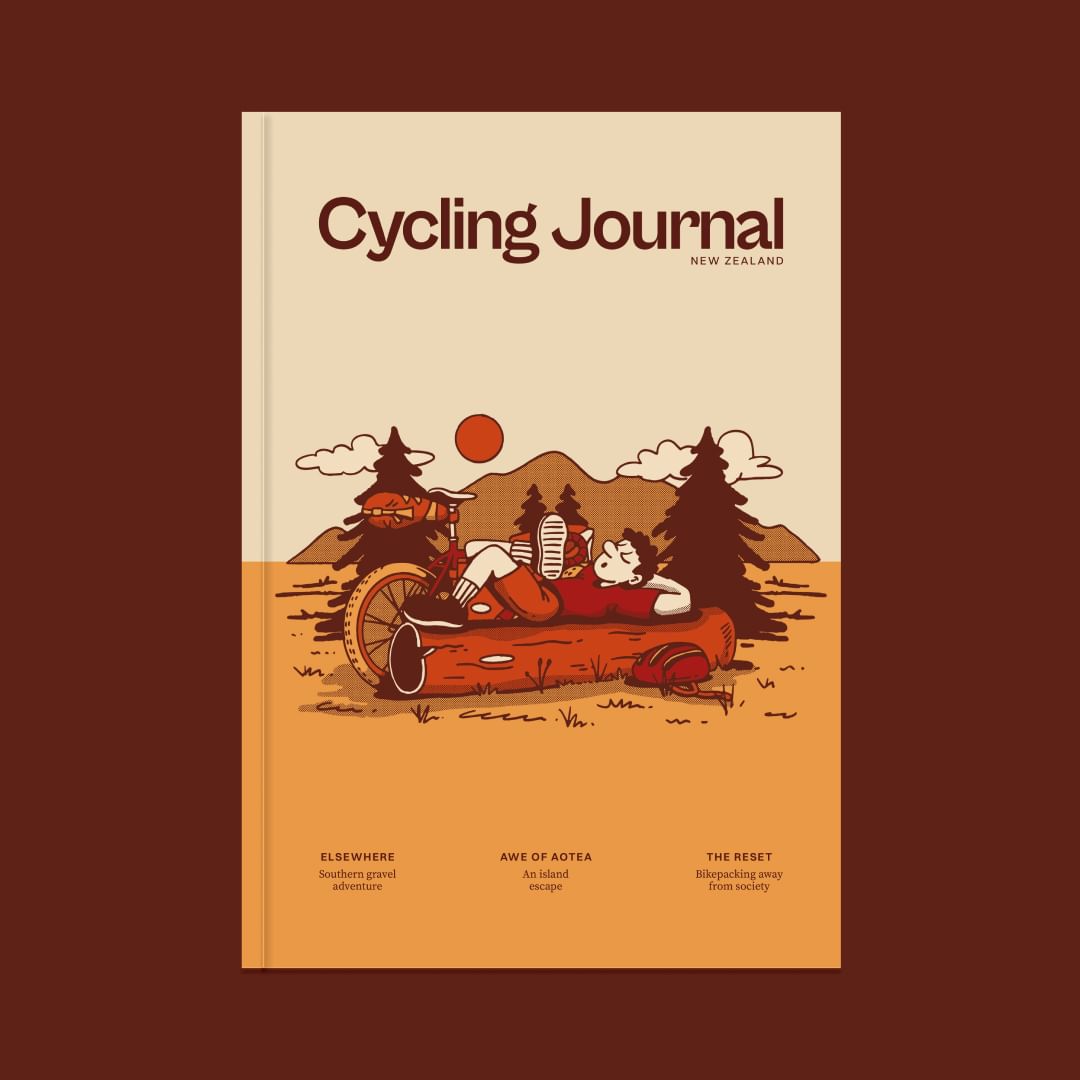Words & Image Lester Perry
RRP $430
Distributor Shimano NZ
Not long before (the legend that is) Wout van Aert and his merry band of bumblebee-coloured watt monsters’ agreement with Lazer helmets came to a close at the end of 2023, eagle-eyed cyclocross viewers will have spotted a new crown atop Wout’s head: the Lazer Z1 KinetiCore, adorned with its Red Bull livery.
The Z1 KinetiCore is Lazer’s latest lightweight helmet, a refreshed and refined version of the old Z1 MIPS. I was lucky enough to get my mitts on one and have put it through rigorous testing for two months. Okay, my ‘rigorous testing’ is just a whole lot of riding but, over the review period, it was my go-to helmet for almost all my rides, whether on the road, gravel, or cross-country bike.
The words ‘Rotational Impact’ appear in loads of new helmet marketing spiel, with companies releasing either licensed technology (e.g. MIPS) or their take on this type of ‘slip-plane’ tech. It all aims to combat rotational impact which, as research shows, is a significant factor in brain and neck injuries. The new Lazer Z1 incorporates this technology, but this helmet is so much more than just its KinetiCore.
KinetiCore is not just a technology that gets added onto a helmet – though it’s an integral part – unlike its main competitor. Lazer essentially carves crisscrossed channels into the inside of the helmet shell; the remaining protrusions act as ‘crumple zones’. The theory is not unlike that of motor- vehicle crumple zones: they’re there to flex and crumple, absorbing blunt and rotational forces. Not only does this type of construction create these zones, it also lightens the helmet, using the existing structure to provide rotational safety rather than adding something extra to achieve it.
As with many (but not all) high-end helmets on the market currently, the Z1 garnered a 5-star Virginia Tech safety rating. Fortunately, I haven’t had to test these claims, but I trust in the experts that the KinetiCore and the overall helmet safety do what they’re designed to do.
Some visual similarities are shared with the previous Z1 but, overall, the lines have been refined, and they’ve squared up some previously curved corners. These are subtle tweaks that bring the helmet up to date and make it much easier on the eye. It’s a great-looking lid.
When first putting on the Z1, it was obvious I was putting on a high-end helmet; the fit was immediately comfortable – that’s half the battle won – and the weight was notably non-existent. I pulled out my trusty digital scale and confirmed the helmet I was testing weighed in at 239g.
Now synonymous with higher-end Lazer helmets, the Advanced RollSys system features on the Z1. The roll dial on top of the helmet tensions the circumference; it’s a unique feature that’s as effective as the more familiar dial on the rear cradle. Doing away with the traditional dial adjuster allows the rear cradle to flex and mould, enhancing the comfort across the back of the head without the stiffness and potential hot spots caused by a dial mechanism and associated stiffness.
Some visual similarities are shared with the previous Z1 but, overall, the lines have been refined, and they’ve squared up some previously curved corners.
To help get the helmet as light as it is, Lazer removed the ‘Y’ strap adjusters, and with these also went the ability to fine-tune individual tension on the front and rear straps. Consequently, you can’t change the angle at which the helmet sits when the chin strap is done up. Hopefully, the standard setting sewn into the straps suits the wearer. Unfortunately, the standard isn’t as good as it could be; when I’ve got the helmet right where I want it, and the chin strap is tight, the front straps aren’t quite as tight as ideal. In itself, this isn’t a huge deal, but it could mean that, during an accident, after an initial hit, the helmet could tilt back on my head a fraction (until the front straps become tight), exposing more of my forehead than ideal. Does this stop me from wearing the helmet? Well, no. I’m happy with the overall fit and comfort, and I am still confident it will do its job when needed, however, depending on another wearer’s head shape, the lack of ‘Y’ adjusters could be a real problem. Food for thought and well worth trying on before buying.
Ventilation and breathability are top-notch, largely thanks to the 33 vents. I can feel air passing over my few remaining hair follicles and out the back. Even at low speeds and while climbing, there’s no feeling of air being trapped, and it remains cool. Having such breathability comes with a loss of aerodynamics, although I’d imagine if aero is your game, you’d likely start the hunt for a new helmet elsewhere anyway.
The helmet has a curious ‘wing’ of sorts floating just above the rear edge. It looks pretty venerable, so if you’re not one to take care of your gear, and your helmets spend time rolling around in the boot of a vehicle or, at times, doubles as a football for young children, then I’d suggest steering clear. I’m one foot in each of these scenarios, so now I keep the helmet in a helmet bag (not supplied) that is out of reach of my kids!
Frontal vents double as a sunglasses dock and are easy to put shades into. I’ve used a few starkly different sunglass styles with the Z1, and the results have varied. They’ve all fitted into the slots and stayed there, but some have sat better than others, and their arms have had varying levels of contact with my head depending on their length and shape. It seems smaller, sleeker frames with straight arms work best – again, something worth considering when trying on a helmet.
What’s the verdict, then? My only gripe is the lack of ‘Y’ adjusters on the straps, and I’d give up the few grams these would add to increase fit customisation a tad. Overall, I rate the Z1 highly. It’s light, comfortable, plenty breathable, and I see no reason the KinetiCore wouldn’t work as advertised. I’d even shell out my own money for one!



